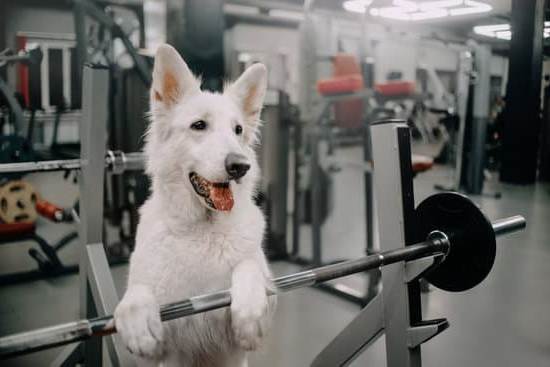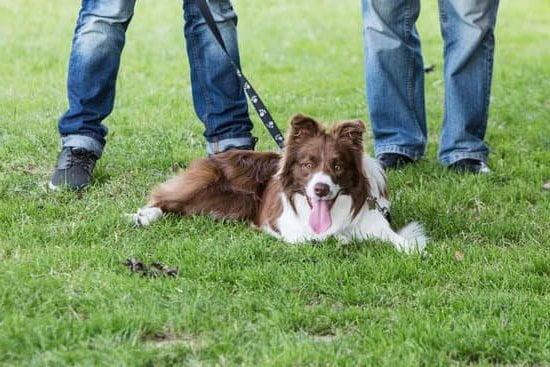Crate training a dog is a valuable tool for both pet owners and their furry companions. When done correctly, it can provide a safe and comfortable space for your dog while aiding in their behavior and obedience.
In this article, we will explore the benefits of crate training for dogs, understanding the psychology behind crates, choosing the right crate, introducing your dog to their new space, the do’s and don’ts of crate training, using positive reinforcement, common challenges and how to overcome them, as well as gradually increasing crate time until your dog can enjoy freedom.
The benefits of crate training for dogs are numerous. Not only does it provide a secure environment for your pet when you’re away or unable to supervise them, but it can also help with potty training and prevent destructive behaviors.
Understanding the psychological reasons behind why dogs view crates as their den is essential for successful training. By selecting the appropriate crate for your dog’s size and breed, you can ensure they have enough room to move comfortably while feeling cozy and secure.
Introducing your dog to their crate may require patience and positive reinforcement. The process should be gradual to build trust and comfort. Additionally, utilizing positive reinforcement techniques can encourage your dog to willingly enter the crate on their own. Throughout this article, we will delve into these topics in more detail to help guide you through successful crate training with your beloved pet.
Understanding the Psychology Behind Crates for Dogs
When it comes to crate training a dog, understanding the psychology behind crates is crucial. Dogs are den animals by nature, and crates mimic this natural instinct for them. A crate can become a safe space for your dog, providing them with a sense of security and comfort. By understanding the psychology behind crates, you can effectively use them as a tool for training and managing your dog’s behavior.
Some benefits of using a crate from a psychological standpoint include:
- Providing a safe and secure space for your dog to retreat to when feeling anxious or overwhelmed.
- Mimicking the den-like environment that dogs naturally seek out in the wild.
- Creating a space where your dog can relax and have alone time when needed.
In addition to serving as a safe haven for dogs, crates also play an essential role in house training and preventing destructive behaviors. Understanding how crates tap into your dog’s natural instincts helps you make the most out of crate training, ensuring that it is a positive experience for both you and your pet.
Choosing the Right Crate for Your Dog
When it comes to crate training a dog, choosing the right crate is essential for the success of the training. The first step in selecting a crate is considering the size of your dog. The crate should be large enough for your dog to stand up, turn around, and lie down comfortably. However, it should not be too big as this can defeat the purpose of creating a den-like space for your dog.
Another factor to consider when choosing a crate for your dog is the material. There are different types of crates available, such as wire crates, plastic crates, and soft-sided crates. Each type has its advantages and disadvantages, so it’s important to choose one that fits your dog’s needs and behaviors.
It’s also essential to consider your dog’s temperament when choosing a crate. If your dog is anxious or prone to escape attempts, a sturdy and secure crate would be most suitable. Conversely, if your dog is calm and relaxed, a more open crate such as a wire crate may be preferred.
Here are some key points to consider when choosing the right crate for your dog:
- Size: The crate should allow for comfortable movement but not be overly spacious.
- Material: Choose between wire crates, plastic crates, or soft-sided crates based on your dog’s needs.
- Temperament: Consider your dog’s behavior and tendencies when making the selection.
Introducing Your Dog to Their Crate
Creating a Positive Association
When introducing your dog to their crate, it’s important to create a positive association with the space. Start by placing treats or their favorite toys inside the crate to entice them to explore. Keep the door open initially so that they can come and go as they please. Avoid forcing them inside or using the crate as a form of punishment, as this can create negative associations.
Mealtime in the Crate
Another effective way to introduce your dog to their crate is by feeding them their meals inside the crate. This helps them associate the space with something positive and enjoyable. Start by placing their food bowl just outside the crate and gradually move it further inside over time. Once they are comfortable eating inside the crate, you can start closing the door for short periods while they eat.
Gradual Encouragement
As your dog becomes more comfortable with their crate, you can gradually encourage them to spend more time inside. Start by closing the door for short periods while you’re still in sight, then gradually increase the duration as they become used to it. Use plenty of praise and positive reinforcement when they enter or stay in their crate voluntarily. With patience and consistency, most dogs will eventually come to view their crate as a safe and comforting space.
Overall, introducing your dog to their crate should be a gradual process that focuses on creating positive associations and using gentle encouragement. Remember that every dog is different, so it’s important to be patient and understanding throughout this process of crate training a dog.
The Do’s and Don’ts of Crate Training
When it comes to crate training a dog, there are important guidelines to follow in order to ensure the process is successful and stress-free for both the pet and the owner. It’s essential to understand the do’s and don’ts of crate training in order to create a positive experience for your dog.
One of the key do’s of crate training a dog is to make the crate a welcoming and comfortable environment. This can be achieved by placing soft bedding, toys, and treats inside the crate to create a positive association.
It’s also important to ensure that the crate is appropriately sized for your dog, allowing them enough room to stand up, turn around, and lie down comfortably. Another important do is to introduce your dog to their crate gradually and positively, using praise and rewards.
On the other hand, there are several don’ts that should be avoided when crate training a dog. For instance, it’s crucial not to use the crate as punishment or isolation for your dog. The crate should always be associated with positive experiences and never used as a form of disciplinary action. Additionally, it’s important not to leave your dog crated for extended periods of time, especially without access to food, water, or bathroom breaks.
Furthermore, it’s essential not to force or rush the process of crate training. Each dog will respond differently to this type of training, so patience is key.
Lastly, it’s important not to give in to whining or barking while your dog is in their crate as this can reinforce negative behavior. By following these do’s and don’ts of crate training a dog, pet owners can ensure a successful and effective training process that benefits both themselves and their furry companion.
Using Positive Reinforcement to Encourage Crate Use
Benefits of Positive Reinforcement
Positive reinforcement is a powerful tool in crate training a dog as it helps to create a positive association with the crate. When your dog feels happy and secure in their crate, they are more likely to see it as their safe space rather than a punishment. By using treats, praise, and toys, you can teach your dog to willingly enter their crate and stay inside for longer periods of time.
How to Use Positive Reinforcement
Start by placing treats or toys inside the crate to encourage your dog to explore it on their own. As they show interest and begin entering the crate, be sure to shower them with praise and affection. Gradually increase the time they spend inside the crate while continuing to use positive reinforcement. It’s important not to force your dog into the crate or use negative reinforcement as this can lead to fear and anxiety surrounding the crate.
Consistency Is Key
Consistency is crucial when using positive reinforcement in crate training. Always reward your dog when they voluntarily enter the crate, whether it’s during training sessions or at bedtime. Eventually, your dog will learn that being in the crate leads to pleasant experiences, making them more comfortable with spending time inside. Be patient and consistent in your approach, and you will likely see positive results in no time.
Common Challenges and How to Overcome Them in Crate Training
Crate training a dog may come with its own set of challenges, but with patience and the correct approach, these obstacles can be overcome. One common challenge in crate training is separation anxiety. Dogs, especially puppies, can become anxious when left alone in their crate, leading to excessive whining or barking. To address this issue, it’s important to create positive associations with the crate by making it a comfortable and safe space for the dog.
Another challenge is resistance to entering the crate. Some dogs may be hesitant or unwilling to enter their crate, making it difficult for pet owners to encourage its use. In such cases, it’s essential to make the crate inviting by placing treats or toys inside and using positive reinforcement techniques. This will help the dog associate the crate with positive experiences and eventually learn to voluntarily enter it.
Additionally, accidents inside the crate can pose a challenge during training. Dogs may have accidents due to anxiety or lack of proper house training. It’s important for pet owners not to scold or punish their dog for accidents in the crate as this could create negative associations with the space. Instead, focus on reinforcing good bathroom habits through regular outdoor breaks and positive reinforcement.
| Common Challenge | How to Overcome |
|---|---|
| Separation Anxiety | Create positive associations with the crate and avoid rushing the process of leaving them alone. |
| Resistance To Entering Crate | Use positive reinforcement techniques, such as treats and toys, to make the crate inviting. |
| Accidents Inside Crate | Avoid punishment and focus on reinforcing good bathroom habits through regular breaks and positive reinforcement. |
Gradually Increasing Crate Time and Graduating to Freedom
Crate training is an effective and humane way to teach your dog good behaviors and provide them with a safe space of their own. Whether you are training a new puppy or helping an older dog learn the ropes, crate training can have many benefits for both you and your furry friend.
Understanding the psychology behind crates for dogs is essential in successfully implementing this training method. Dogs are den animals by nature, and a crate can mimic the safety and security of a den for them. This can help reduce anxiety and provide a sense of comfort for your pet.
Choosing the right crate for your dog is crucial to their comfort and success in the training process. It’s important to select a crate that is appropriate for their size, with enough space for them to stand up, turn around, and lay down comfortably. Additionally, introducing your dog to their crate gradually and using positive reinforcement will encourage them to see it as a positive space rather than a punishment.
As you work through the process of crate training, remember that common challenges may arise along the way. With patience, consistency, and positive reinforcement, these challenges can be overcome.
Gradually increasing crate time and allowing your dog more freedom as they show progress is key in ensuring that they adapt well to their crate and develop good behavior habits. By following these steps, crate training can be a successful and beneficial tool in teaching your dog proper behavior while keeping them safe and comfortable.
Frequently Asked Questions
How Long Does It Take for a Dog to Get Used to Crate Training?
The length of time it takes for a dog to get used to crate training can vary depending on the individual dog. Some dogs may adjust to the crate quickly, while others may need more time and patience to feel comfortable.
How Many Hours a Day Should I Crate Train My Dog?
When crate training a dog, it’s important to follow a schedule that aligns with the dog’s natural behavior. Typically, adult dogs should not be crated for more than 6-8 hours a day, while puppies may need shorter periods of crate time due to their smaller bladders and higher energy levels.
Is Crate Training Stressful for Dogs?
Crate training can be stressful for some dogs, especially if they have had negative experiences with crates in the past. It’s crucial to make the crate a positive and inviting space for the dog by using treats, toys, and positive reinforcement during the training process.
Gradually introducing the crate and making it a safe haven can help alleviate stress for many dogs during crate training.

Welcome to the blog! I am a professional dog trainer and have been working with dogs for many years. In this blog, I will be discussing various topics related to dog training, including tips, tricks, and advice. I hope you find this information helpful and informative. Thanks for reading!





